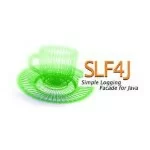Enterprise Java
Lazy JSF Primefaces Datatable Pagination – Part 2
The page code is very simple and there is no complication. Check the “index.xhtml” code:
01 02 03 04 05 06 07 08 09 10 11 12 13 14 15 16 17 18 19 20 21 22 23 24 25 26 27 28 29 30 31 32 33 34 35 36 37 38 39 40 41 | <!DOCTYPE html PUBLIC "-//W3C//DTD XHTML 1.0 Transitional//EN" "http://www.w3.org/TR/xhtml1/DTD/xhtml1-transitional.dtd"> xmlns:h="http://java.sun.com/jsf/html" xmlns:f="http://java.sun.com/jsf/core" xmlns:p="http://primefaces.org/ui"><h:head></h:head><h:body> <f:view> <h:form> <p:dataTable id="lazyDataTable" value="#{playerMB.allPlayers}" var="player" paginator="true" rows="10" selection="#{playerMB.player}" selectionMode="single" paginatorTemplate="{CurrentPageReport} {FirstPageLink} {PreviousPageLink} {PageLinks} {NextPageLink} {LastPageLink} {RowsPerPageDropdown}" rowsPerPageTemplate="5,10,15" style="width: 80%;margin-left: 10%;margin-right: 10%;"> <p:ajax event="rowSelect" update=":playerDialogForm" oncomplete="playerDetails.show()" /> <p:column> <f:facet name="header">Name</f:facet> <h:outputText value="#{player.name}" /> </p:column> <p:column> <f:facet name="header">Age</f:facet> <h:outputText value="#{player.age}" /> </p:column> </p:dataTable> </h:form> <p:dialog widgetVar="playerDetails" header="Player" modal="true"> <h:form id="playerDialogForm"> <h:panelGrid columns="2"> <h:outputText value="Id: " /> <h:outputText value="#{playerMB.player.id}" /> <h:outputText value="Name: " /> <h:outputText value="#{playerMB.player.name}" /> <h:outputText value="Age: " /> <h:outputText value="#{playerMB.player.age}" /> </h:panelGrid> </h:form> </p:dialog> </f:view></h:body></html> |
We got a lazy datatable that will display a selected value in a dialog.
In our Managed Bean we have a simpler code than the page:
01 02 03 04 05 06 07 08 09 10 11 12 13 14 15 16 17 18 19 20 21 22 23 24 25 26 27 28 29 30 31 32 33 34 35 36 37 38 39 | package com.mb;import java.io.Serializable;import javax.faces.bean.ManagedBean;import javax.faces.bean.ViewScoped;import org.primefaces.model.LazyDataModel;import com.model.Player;@ViewScoped@ManagedBeanpublic class PlayerMB implements Serializable { private static final long serialVersionUID = 1L; private LazyDataModel<Player> players = null; private Player player; public LazyDataModel<Player> getAllPlayers() { if (players == null) { players = new PlayerLazyList(); } return players; } public Player getPlayer() { if(player == null){ player = new Player(); } return player; } public void setPlayer(Player player) { this.player = player; }} |
We got a get/set to the Player entity and a get to the an object of the LazyDataModel type.
Check bellow the implementation of the PlayerLazyList code
01 02 03 04 05 06 07 08 09 10 11 12 13 14 15 16 17 18 19 20 21 22 23 24 25 26 27 28 29 30 31 32 33 34 35 36 37 38 39 40 41 42 43 44 45 46 47 48 49 50 51 52 53 54 55 56 57 58 59 60 61 62 63 64 65 66 67 68 69 70 71 72 73 74 75 76 77 | package com.mb;import java.util.List;import java.util.Map;import org.primefaces.model.LazyDataModel;import org.primefaces.model.SortOrder;import com.connection.MyTransaction;import com.dao.PlayerDAO;import com.model.Player;public class PlayerLazyList extends LazyDataModel<Player> { private static final long serialVersionUID = 1L; private List<Player> players; private MyTransaction transaction; private PlayerDAO playerDAO; @Override public List<Player> load(int startingAt, int maxPerPage, String sortField, SortOrder sortOrder, Map<String, String> filters) { try { try { transaction = MyTransaction.getNewTransaction(); playerDAO = new PlayerDAO(transaction); transaction.begin(); // with datatable pagination limits players = playerDAO.findPlayers(startingAt, maxPerPage); // If there is no player created yet, we will create 100!! if (players == null || players.isEmpty()) { playerDAO.create100Players(); // we will do the research again to get the created players players = playerDAO.findPlayers(startingAt, maxPerPage); } } finally { transaction.commit(); } } catch (Exception e) { e.printStackTrace(); } // set the total of players if(getRowCount() <= 0){ setRowCount(playerDAO.countPlayersTotal()); } // set the page dize setPageSize(maxPerPage); return players; } @Override public Object getRowKey(Player player) { return player.getId(); } @Override public Player getRowData(String playerId) { Integer id = Integer.valueOf(playerId); for (Player player : players) { if(id.equals(player.getId())){ return player; } } return null; }} |
About the code above:
- The load method: the Primefaces will invoke this method every time that the pagination is fired. It will have all parameters with valid values; with these parameters you will be able to do a query in the database getting only for the needed data. If you want to sort your query by a field you can use the sortField attribute that will have the column datatable value (it will be null if the user do not order); the sortOrder will indicate if the user wants ascending or descending.
- The getRowKey method: this method return an id to each line, the Primefaces will invoke this method when needed.
- The getRowData method: will return a selected Player in the datatable.
- When you run this application the first time it will persist 100 players in the database. In a real application this would not be necessary.
A last configuration need to be added in the “web.xml” file:
1 2 3 4 | <persistence-context-ref> <persistence-context-ref-name>JSFPU</persistence-context-ref-name> <persistence-unit-name>JSFPU</persistence-unit-name></persistence-context-ref> |
We will use this configuration to do the JNDI Lookup.
Running our application
Now we just need to start up the application.
To access the application you can use the link:
http://localhost:8080/DatatableLazyPrimefaces/
Click here to download the source code of this post.
Reference: Lazy JSF Datatable Pagination (Primefaces) from our JCG partner Hebert Coelho at the uaiHebert blog.








bulllllcheeeeat
why JSPU??